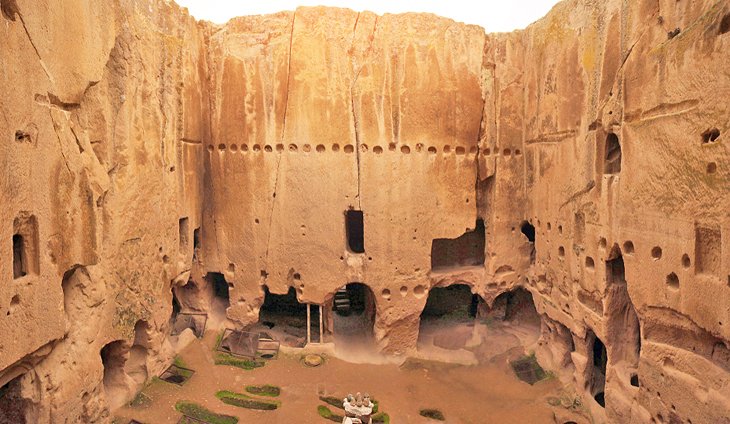5 top attractions in Turkey and Cappadocia

Fabulous Turkey … the land at the center between East and West influences. Derinkuyu Underground City is Cappadocia’s deepest underground shelter, and just like Kaymakli, was used by the early Christians to hide from attack. The tunnels here are quite claustrophobic in places as they travel deeper and deeper into the ground. There is a cavernous chapel area and many living and storage areas to explore in this below-ground maze. The ingenious ventilation shaft system used by Derinkuyu’s inhabitants can also be seen. Derinkuyu and Kaymakli Underground Cities are close enough together to see both on a day trip, but if you only want to see one, Derinkuyu is less popular with large tourist coach loads, so you’re more likely to be able to explore the tunnels here unhindered by crowds
The ruins of Ephesus are a popular tourist attraction on the west coast. The city of Ephesus was once famed for the Temple of Artemis, one of the seven wonders of the ancient world, which was destroyed by a mob led by the archbishop of Constantinople in 401 AD. Some of the structures can still be seen however including the Great Theater and the Library of Celsus. The library was built around 125 AD to store 12,000 scrolls and to serve as a monumental tomb for Celsus, the governor of Asia. The facade was carefully reconstructed in the 1970s to its present splendid state from the original pieces.
The top sightseeing drawcard for Eastern Turkey, Mount Nemrut’s summit funerary mound is scattered with the broken remnants of once mammoth statues, which guarded it. This weird and lonely place has to be one of Turkey’s most peculiar archaeological sites. The giant stone heads of long-forgotten gods stare out from the summit, casting an eerie atmosphere over the barren mountaintop. The time to come is at sunrise, so you can watch the statues as they loom out of the dark.
The Gallipoli Campaign in World War One saw months of bitter fighting between Allied troops – particularly those of Australia and New Zealand – and the forces of the Ottoman Empire. It was an attempt by the Allies to knock the Ottomans out of the war and its failure marked a high-point for Ottoman forces during the conflict. In modern times, the battlefields of this campaign are marked with a series of memorials, museums and cemeteries where visitors can pay their respects and learn about the sombre history of these costly events. Today, it is at Anzac Cove where the annual commemorative Anzac Day ceremonies are held.
A Cappadocia balloon ride is a fantastic way to explore the rolling stone and rippling of the cliffs with their green landscape that was formed by the volcanic eruptions, the vegetable plots and vineyards that are tended to by the local farmers. Many tours of Cappadocia will show you the hermit hideouts carved into the soft volcanic rock. Read more on Cappadocia hot air balloon ride.
The Hagia Sophia was once a house of worship that served several religions well over the centuries. It started out as a Greek Eastern Orthodox basilica that was home to the Patriarch of Constantinople when it was built in 537. For almost six decades in the 12th century it was a Roman Catholic church. It became a mosque in 1453, remaining that way until 1931, when it was closed. It reopened as a museum in 1935. At one time, it was the largest cathedral in the world at one time, and served as the inspiration for other mosques, including the Blue Mosque, as it was such a great example of Byzantine architecture. It is most famous for its mosaics depicting various religious scenes.
